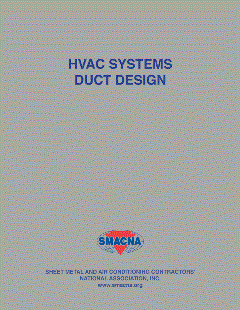Originally built in 1879, The Mackie Building in downtown Milwaukee, Wisconsin, has a rich history, from serving as the city’s Chamber of Commerce to being The Grain Exchange during the time when Milwaukee was the world’s largest primary wheat market for trading. The large five-story building was designed in an elegant Italianate architectural style, with soaring ceilings, hand-painted frescos and gold leaf adornments throughout the interior spaces.
In 2010, the Mackie Building was placed on the National Register of Historic Places and in 2011, Josh Jeffers, a distinguished property developer, purchased the 55,000 square-foot historic building with the vision of creating a mixed-use complex with restaurants, businesses, and residential spaces. When Jeffers put that vision into motion with a multi-million-dollar overhaul, the goal for the Mackie Building was to maintain the historic design aesthetics while upgrading the HVAC system to effectively serve a diverse range of tenants.
CRITERIA
The project team required a heating and cooling system that would both respect The Mackie Building’s recognized architectural character and meet the different needs of the tenants — all whom expect modern comfort and convenience. The team looked for a system that could deliver performance, enhanced energy-savings, and was aesthetically pleasing while maintaining historic qualities of the landmark. Another major requirement for the new HVAC system was design flexibility. The Mackie Building’s unique architecture of the roof and no usable square footage on the ground floor presented a substantial obstacle, which meant the new system would have to be flexible enough to work within the confines of the existing structure.
SOLUTION
The building owner, J. Jeffers & Co. and architect firm Continuum Architects + Planners, with the help of mechanical engineering firm Graef, turned to leading local HVAC expert Vyron Corp. to design an ultra-efficient solution that would allow for individually-controlled heating and cooling in the building’s mix of residential and commercial spaces.
After carefully reviewing the requirements, Vyron specified the LG Multi V™ IV VRF heat recovery system, known for its incredible energy efficiency, high performance and flexibility in design and installation options. LG variable refrigerant flow (VRF) heat recovery systems were selected because they provided tenants with the freedom to the pick their precise level of comfort through simultaneous heating and cooling while maximizing the energy efficiency by balancing the heating and cooling demands across the entirety of the system. Additionally, the LG VRF system maintains efficiency above a Coefficient of Performance of three, which gave the team the high performance they desired.
The biggest benefit of the Multi V system offered the Mackie Building was its design flexibility. To address the lack of space on the roof and the ground level, the team architected a unique installation by placing the 80 tons of outdoor units in unused space within the building’s clock tower – something that would have been impossible with a conventional system design. Louvers with dampers were also installed on the side of the clock tower to maintain optimal operating temperature for the system year round. Throughout the interior, the team mixed ducted and duct-free units, affording them the freedom to install the unit that best worked with each space. For example, on the first floor, which housed an iconic and historic tavern, LG’s wall-mounted Art CoolTM Mirror units were used as there weren’t any mechanical closets or storage space for an air handler and their sleek mirror finish complemented the overall aesthetic. The design flexibility combined with the high performance and energy efficiency of the LG VRF solution thoroughly addressed the building’s diverse group of tenants in a cost effective manner without sacrificing comfort.
RESULTS
The LG VRF system allowed for a flexible design with minimal ductwork to deliver a non-invasive HVAC system.
“From an adaptive reuse perspective, we really needed every inch to make the numbers work, so we couldn’t have mechanical closets taking up valuable square footage,” said Jeffers, president, J. Jeffers & Co. “The LG system is very conducive to being retro-fitted into an old building. We were able to zone each floor and individual units as needed without having to sacrifice leasable space or comfort.”
In addition to delivering on the space requirements, the LG VRF solution complemented the architectural features. Falamak Nourzad, design principle of Continuum Architects + Planners noted, “The system had a lot of flexibility that allowed us to really be in inconspicuous areas without jeopardizing the look and feel of some of the high-quality aesthetic spaces.”
For nearly the same cost as a traditional system, The Mackie Building now has a highly reliable, energy-efficient HVAC solution that delivers comfort and conveniences for its tenants.
“Incredibly, the LG VRF system gave us the capabilities to meet all of the demands as we were navigating the complicated installation process, said Roberta Hill, operations manager at Vyron Corp. “The system also shone in providing future tenant flexibility, minimal routine maintenance, low operating cost and significant energy savings.”
Publication date: 9/03/208
Want more HVAC industry news and information? Join The NEWS on Facebook, Twitter, and LinkedIn today!











